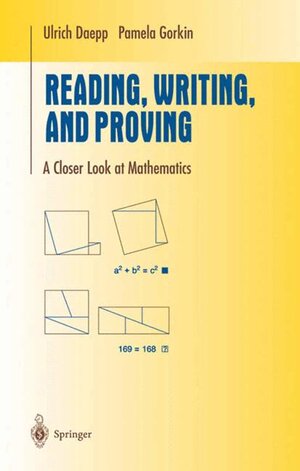- Reading, Writing, and Proving (978-1-4419-9478-3) - Einband - fest (Hardcover)

From the reviews:
U. Daepp and P. Gorkin
Reading, Writing, and Proving
A Closer Look at Mathematics
„Aids students in their transition from calculus (or precalculus) to higher-level mathematics . . . The authors have included a wide variety of examples, exercises with solutions, problems, and over 40 illustrations.“
—L'ENSEIGNEMENT MATHEMATIQUE
„Daepp and Gorkin (both, Bucknell Univ.) offer another in the growing genre of books designed to teach mathematics students the rigor required to write valid proofs … . The book is well written and should be easy for a first- or second- year college mathematics student to read. There are many ‘tips’ offered throughout, along with many examples and exercises … . A book worthy of serious consideration for courses whose goal is to prepare students for upper-division mathematics courses. Summing Up: Highly recommended.“ (J. R. Burke, CHOICE, 2003)
„The book Reading, Writing, and Proving … provides a fresh, interesting, and readable approach to the often-dreaded ‘Introduction to Proof’ class. … RWP contains more than enough material for a one-semester course … . I was charmed by this book and found it quite enticing. … My students found the overall style, the abundance of solved exercises, and the wealth of additional historical information and advice in the book exceptionally useful. … well-conceived, solidly executed, and very useful textbook.“ (Maria G. Fung, MAA online, December, 2004)
„The book is intended for undergraduate students beginning their mathematical career or attending their first course in calculus. … Throughout the book … students are encouraged to 1) learn to understand the problem, 2) devise a plan to solve the problem, 3) carry out that plan, and 4) look back and check what the results told them. This concept is very valuable. … The book is written in an informal way, which will please the beginner and not offend the more experienced reader.“ (EMS Newsletter, December, 2005)
This book, based on Pólya's method of problem solving, aids students in their transition to higher-level mathematics. It begins by providing a great deal of guidance on how to approach definitions, examples, and theorems in mathematics and ends by providing projects for independent study. Students will follow Pólya's four step process: learn to understand the problem; devise a plan to solve the problem; carry out that plan; and look back and check what the results told them.





